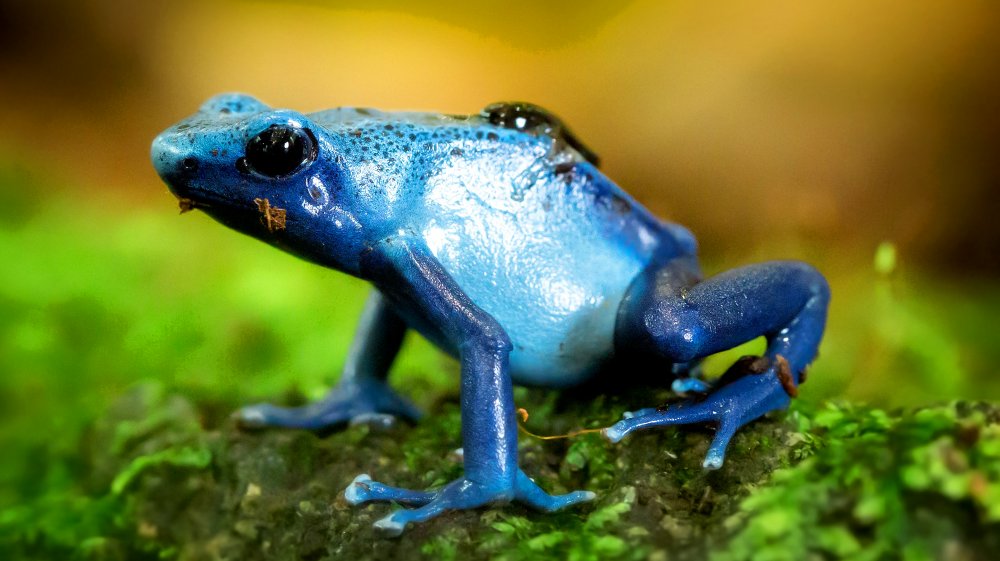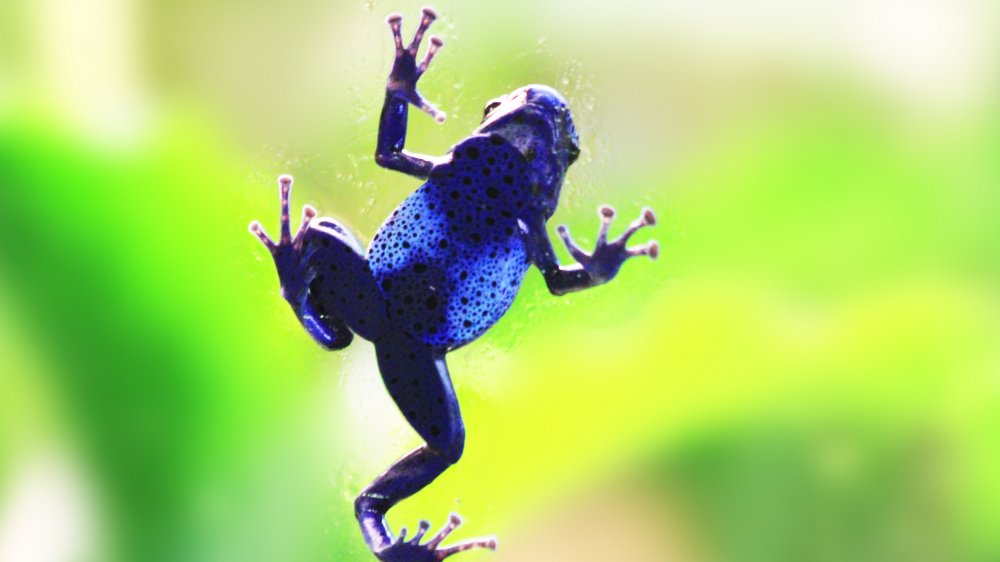What Happens If You Touch A Blue Poison Dart Frog?
Physical contact with frogs and toads is the stuff of legend. You may have heard tales of everything from violent, painful death by frog to far-out psychedelic journeys kickstarted by tonguing a toad. In truth, both these experiences are possible, but usually only by way of a few of the 6,500-plus species of frog and toad. Further, neither is something you should really want to seek out, because to humans, "Frog and Toad are Friends," and they've got enough problems to worry about without being licked by hapless hippies.
Now, the blue poison dart frog is a perfect example of how reality can be blown out of proportion. Yes, it is quite poisonous, according to iNaturalist, and highly toxic if consumed. Assume you would die if you ate one. But when it comes to death by touch — these do not appear to be immediately lethal. Rather, blue poison dart frog toxins cause "pain, cramping, and stiffness when the frogs are handled roughly."
The "ribbiting" mystery of poison dart frog toxicity
Before you read any further, you should absolutely not take that as a ticket-to-ride in terms of touching frogs. Don't risk something you're not absolutely sure of. Something as simple as a cut in the palm could mean the difference between life and death. Unless you're a card-carrying herpetologist — hands off the frogs!
This is especially important, because even the card carrying herpetologists still have a lot to learn about the roughly 170 species of poison dart frogs, including how exact they maintain their poisonous nature. The best we've got is that they seem to derive it from the bugs that they eat, specifically ants, and lose their toxic powers if their diet is altered, such as when they are raised in captivity, according to the BBC.
According to Animal Diversity, blue poison dart frogs are also not actually used to tip arrows with poison, a tortuous process reserved for the even more lethal golden poison frog. However, they were reportedly involved in another practice in which the frogs were rubbed on the plucked, bare skin of plain green-feathered parrots to change their color to a festive red when it grew back.
So, to recap, you'll more than likely die if you eat a blue poison dart frog, and might not if you just handle it... But you absolutely should never handle one, for both your sake and the frog's. Instead, work on conserving them so future generations can enjoy their vivid colors!

